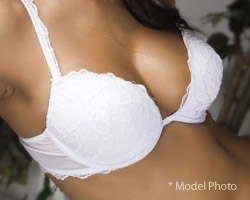SILICONE IMPLANTS AND RIPPLING VISIBILITY
Posted On: June 07, 2018 Author: The Office of Dr. Stuart Linder Posted In: Breast Augmentation, Breast Implants, Breast topics, Plastic Surgery
 In general, there has been a myth that the use of silicone implants will completely reduce or prevent all visibility and rippling of the breasts. This is actually untrue. We have had a significant number of patients present with silicone implants from around the world who now have serious rippling and visibility, both along the medial breast as well as the lateral.
In general, there has been a myth that the use of silicone implants will completely reduce or prevent all visibility and rippling of the breasts. This is actually untrue. We have had a significant number of patients present with silicone implants from around the world who now have serious rippling and visibility, both along the medial breast as well as the lateral.
Implant rippling and visibility can occur both above and below the muscle. Obviously, placing silicone or saline implants above the muscle in the subglandular retromammary plane does increase the risk of visibility around the medial breast, as there is no muscle coverage. However, even patients who are extremely thin and have an ectomorphic build may develop visibility and rippling around the medial breast associated with the fact that all silicone implants are not completely filled and there is loose laxity in the upper pole of the implant causing visibility.
This can be distressing to patients, and therefore we try to instruct patients that even style 45 extra high profile silicone gel implants can show visibility and rippling around the medial and/or lateral breast. Placing silicone gel implants under the muscle of either style 20 or style 45 on a primary augmentation using the dual plane technique usually leads to reduced visibility and rippling. However, on revision surgeries, our patients are instructed that actually the least rippling and visibility of an implant is a high profile style 68 Natrelle® saline implant over-filled significantly. We have had to use this on a significant number of patients who present with visibility and rippling with silicone implants and who want reduced visibility along the medial breast, especially patients in centerfold, high-end modeling magazines.
Increased visibility and rippling with silicone implants can occur with textured implants that stick to the tissue and adhere such as VELCRO®. We don’t use textured implants because of its increased visibility, as well as malpositioning of the implant, which cannot be corrected unless directly operated on. The lower profile implants, style 10 and 15, have greater visibility and rippling around the medial breast associated with under-filled implants. Styles 20 and 45 are over-filled and have more projection and a narrowed tapered diameter and therefore rip less; however, even style 45 gel implants will ripple in very thin ectomorphic built patients. These patients should be instructed of this pre-operatively and may require an acellular dermal matrix such as AlloDerm or Strattice in order to reduce some of the visibility and rippling. Once again, placing high profile style 68 saline implants may be the only alternative for severe medial breast visibility and rippling, although these implants have a more unnatural appearance and appear more “fake.” They can reduce rippling by greatly over-filling these bags.
Women often see visibility and rippling with silicone implants when bending over wearing bikinis or dresses that would reveal the lateral outer aspect of the breast. The cure-all for rippling, includes:
- Increasing tissue coverage by placing the implant in the submuscular dual plane technique rather than above the muscle (retromammary or subglandular)
- Using smooth gel implants instead of textured implants
- Using increased projection such as the style 45 silicone implant with increased fill and more projection
To schedule your consultation with Dr. Linder or learn more about breast augmentation or revision surgery, call our office at 310-275-4513 or fill out our online contact form today.